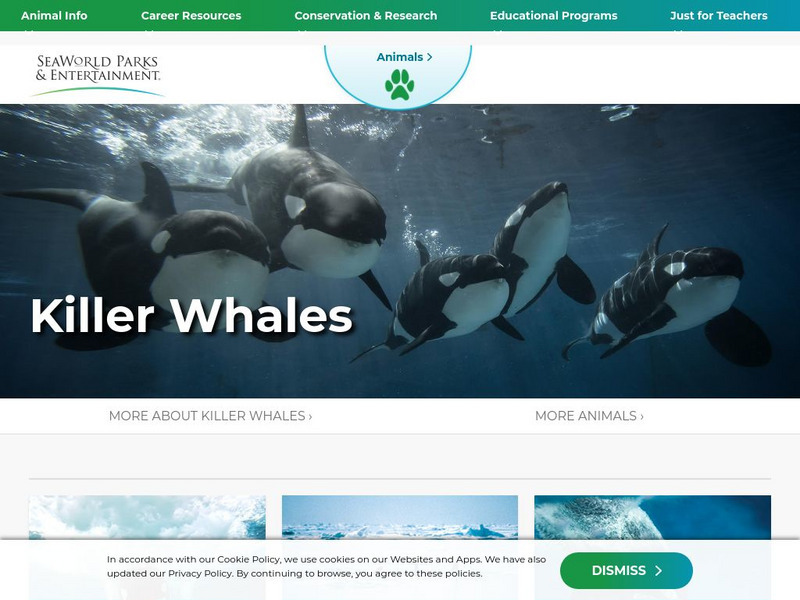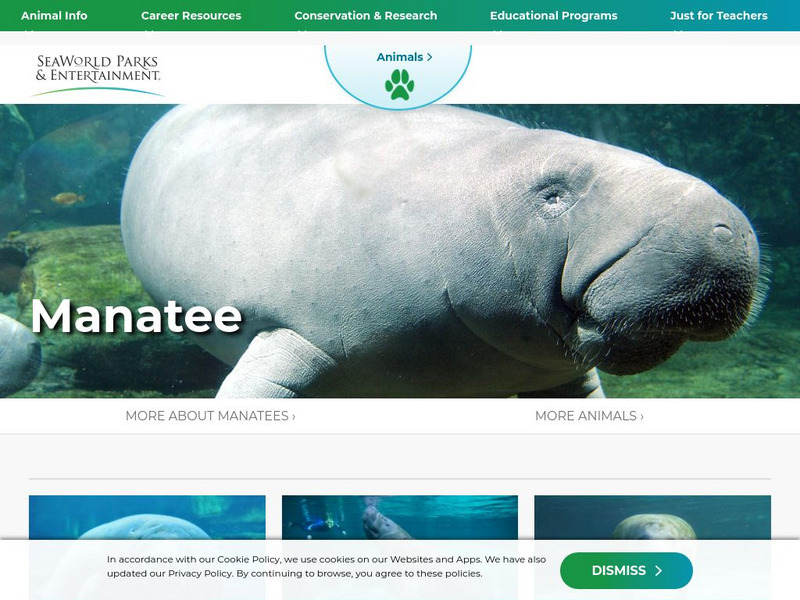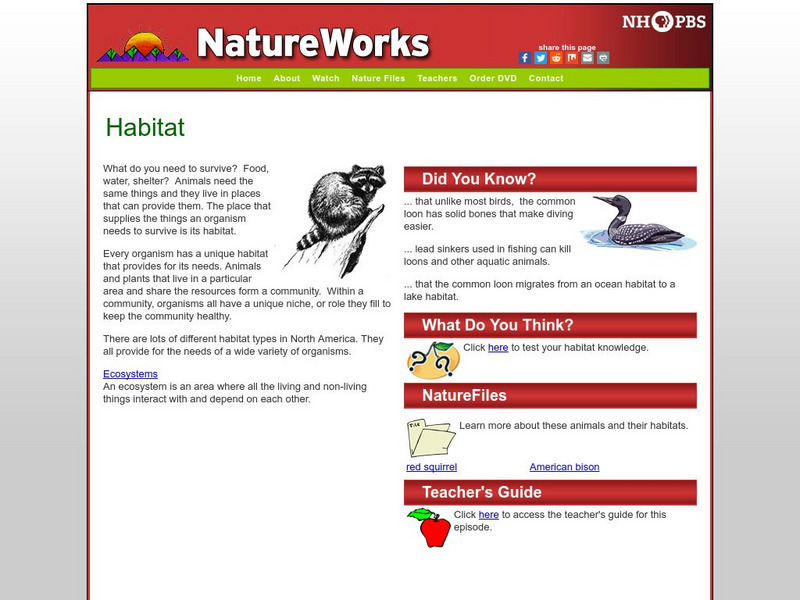Annenberg Foundation
Annenberg Learner: Journey North: Humpback Whales
A very informative article that answers questions related to characteristics of the humpback whale plus life cycle, ecology, behavioral adaptations and conservation. The migratory patterns of this whale are also tracked.
Other
Between Us Counseling Helpline: Abnormal Behavior
Discusses what maladaptive, or abnormal, behavior is, the impact of stigma on people suffering from a mental health issue, and some of the causes of maladaptations.
Other
Elephant Voices: Ele Quiz
Three interactive quizzes on the topics of elephant families, getures, and vocal communication. After each ten-question quiz, the correct answers are shown for review.
Sea World Parks & Entertainment
Sea World: Beluga Whales
Outlines the characteristics of the beluga whale, including classification, habitat, behaviors, and conservation. Helps students identify with whales with a list of "Books for Young Readers." Information at a level of upper intermediate...
Sea World Parks & Entertainment
Sea World: Flamingos
Outlines the characteristics of the flamingo, including classification, habitat, behaviors, and conservation. Helps students identify with whales with a list of "Books for Young Readers." Information at a level of upper intermediate or...
Sea World Parks & Entertainment
Sea World: Harbor Seals
Outlines the characteristics of the harbor seal, including classification, habitat, behaviors, and conservation. Helps students identify with seals with a list of "Books for Young Readers." Information at a level of upper intermediate or...
Sea World Parks & Entertainment
Sea World: Killer Whales
Outlines the characteristics of the killer whale, including classification, habitat, behaviors, and conservation. Helps students identify with whales with a list of "Books for Young Readers." Information at a level of upper intermediate...
Sea World Parks & Entertainment
Sea World: Manatees
Outlines the characteristics of the manatee, including classification, habitat, behaviors, and conservation. Helps students identify with manatees with a list of "Books for Young Readers." Information at a level of upper intermediate or...
PBS
Nh Pbs: Nature Works: Habitat
What do you need to survive? Food, water, shelter? Animals need the same things and they live in places that can provide them. This informative site looks at the characteristics, range, habitat, food, reproduction and behavior of the red...
Sea World Parks & Entertainment
Sea World: Raptors
Outlines the characteristics of birds of prey, including classification, habitat, behaviors, and conservation. Helps students identify with these birds by integrating a list of "Books for Young Readers." Information at a level of upper...
National Geographic
National Geographic: Symbiotic Relationships in Marine Ecosystems
In this lesson students analyze videos to make observations about species, populations, and communities of organisms and discuss their symbiotic relationships. Then they create a hypothetical marine ecosystem and describe the adaptive,...
African Wildlife Foundation
African Wildlife Foundation: Impala
Resource takes an exploratory look at the impala, a slender, medium-sized antelope so adaptable that it is found from southern Africa to the northern limits of East Africa. Content includes information on the impala's physical...
Sea World Parks & Entertainment
Sea World: Bottlenose Dolphins
Outlines the characteristics of the bottlenose dolphin, including classification, habitat, behaviors, and conservation.
Penguin Science
Penguin Science: Penguins Marching Into the Classroom
Follow Adelie Penguin families as they raise their chicks. Daily pictures (November through January) from the penguin colony on Ross Island, Antarctica. are posted with data for students to keep a field journal. Inquiry classroom...
PBS
Pbs Learning Media: Wild Kratts: All About Lizards Lesson Plan
Students explore the diversity of lizards in terms of characteristics, behavior, and habitat. Activities feature five species of lizards and their special body structures needed for survival.
Other
Elk Facts
Read some quick facts about elk from the Rocky Mountain Foundation. Including where they come from, what they eat, and how they have adapted. You can also print out an elk maze to test your knowledge.
Other
Play It Safe on the Playground: Lesson Plan
This lesson plan provides plenty of activity suggestions for reinforcing playground safety. Although this is designed for primary students, it could certainly be adapted to other grades.
US Navy
Office of Naval Research: Green Sea Turtle
This very thorough site examines the physical characteristics, adaptations and current research associated with the Green Sea Turtle. A quick quiz is also a part of this site.
Sea World Parks & Entertainment
Sea World: Infobook: Penguins
Brought to you by SeaWorld, this is a look at all facts related to penguins! Main topics include habitat, physical characteristics, senses, adaptation, diet, reproduction, young, conservation, and more. Click on any of these topics to...
PBS
Nh Pbs: Nature Works: Marine Communities
This informative Natureworks site examines how life in marine communities must be adapted to live and survive under a wide variety of conditions.
Other
Ms. Inselberger's Ap Bio Blog: Why Evolution Is True
In Mr. Coyne's discussion of natural selection, he also illustrates the idea of "adaptive behavior". In full detail, he describes the Asian Giant hornet and all of its physical attributes with which it brutally devours the introduced...
Vision Learning
Visionlearning: Biology: Galapagos Finches
Interactive animation illustrates how Charles Darwin used his study of finch beaks to explain evolution. A phylogenetic tree diagram shows how the birds' color and beak shape changed over generations.
PBS
Pbs Learning Media: Tracking Polar Bears
In this interactive activity adapted from the USGS Alaska Science Center, students will track the movements of a polar bear as it migrates across the changing Arctic sea ice and compare the paths of four different polar bears.
TED Talks
Ted: Ted Ed: Why Are Sloths So Slow?
Kenny Coogan describes the physical and behavioral adaptations that allow sloths to be so slow.

















